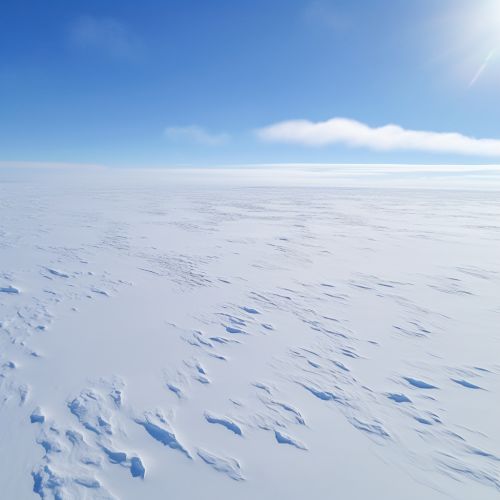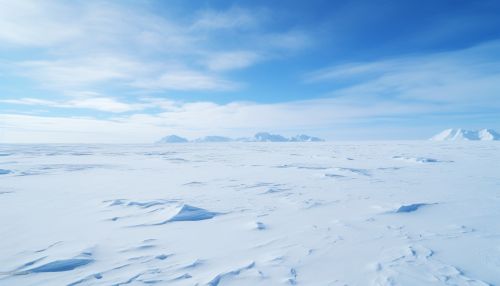East Antarctic Ice Sheet
Overview
The East Antarctic Ice Sheet (EAIS) is the largest ice sheet on Earth, covering approximately 10 million square kilometers, which is about the size of the United States. It is located in the Antarctic region of the Southern Hemisphere. The EAIS is an important component of the global climate system, as it contains about 90% of the world's fresh water and has the potential to significantly influence global sea levels.


Geography and Structure
The EAIS is divided into three main parts: the Dronning Maud Land, the Enderby Land, and the Wilkes Land. The Dronning Maud Land is the westernmost part of the EAIS and is characterized by a high plateau covered with ice. The Enderby Land is located in the central part of the EAIS and is characterized by a series of ice domes and ice streams. The Wilkes Land is the easternmost part of the EAIS and is characterized by a large subglacial basin.
The EAIS is composed of a thick layer of ice, up to 4 kilometers in some places, that rests on a bedrock of continental crust. The ice sheet is fed by snowfall that compacts over time to form ice. This ice then flows outward from the center of the ice sheet towards the coast, where it either melts or breaks off into the ocean as icebergs.
Climate and Environment
The climate of the EAIS is extremely cold, with average temperatures ranging from -20 to -60 degrees Celsius. The ice sheet is also subject to strong katabatic winds, which are cold, dry winds that flow downhill from the interior of the ice sheet towards the coast. These winds can reach speeds of up to 200 kilometers per hour and play a significant role in the transport and deposition of snow on the ice sheet.
The EAIS is home to a unique and fragile ecosystem. Despite the harsh conditions, a variety of organisms, including microorganisms, lichens, and mosses, are able to survive and thrive in this environment. These organisms are adapted to the extreme cold, dryness, and high levels of solar radiation.
Research and Study
The EAIS has been the subject of extensive scientific research due to its importance in the global climate system. Studies have focused on understanding the dynamics of the ice sheet, including its response to changes in climate and its potential contribution to sea level rise.
One of the main tools used in the study of the EAIS is ice core drilling. Ice cores are long cylinders of ice that are drilled from the ice sheet and provide a record of past climate conditions. Analysis of ice cores from the EAIS has provided valuable insights into the history of the Earth's climate over the past million years.
Another important area of research is the study of subglacial lakes. These are bodies of liquid water that exist beneath the ice sheet and are isolated from the rest of the world. The study of these lakes could provide insights into the potential for life in extreme environments, both on Earth and on other planets.
Impact on Global Climate
The EAIS plays a crucial role in the global climate system. It acts as a giant mirror, reflecting solar radiation back into space and helping to regulate the Earth's temperature. The ice sheet also stores a large amount of fresh water, which if released into the ocean, could significantly raise global sea levels.
Current research suggests that the EAIS is relatively stable compared to the smaller West Antarctic Ice Sheet. However, there is concern that warming temperatures could destabilize parts of the EAIS, leading to increased ice loss and a rise in sea levels.
